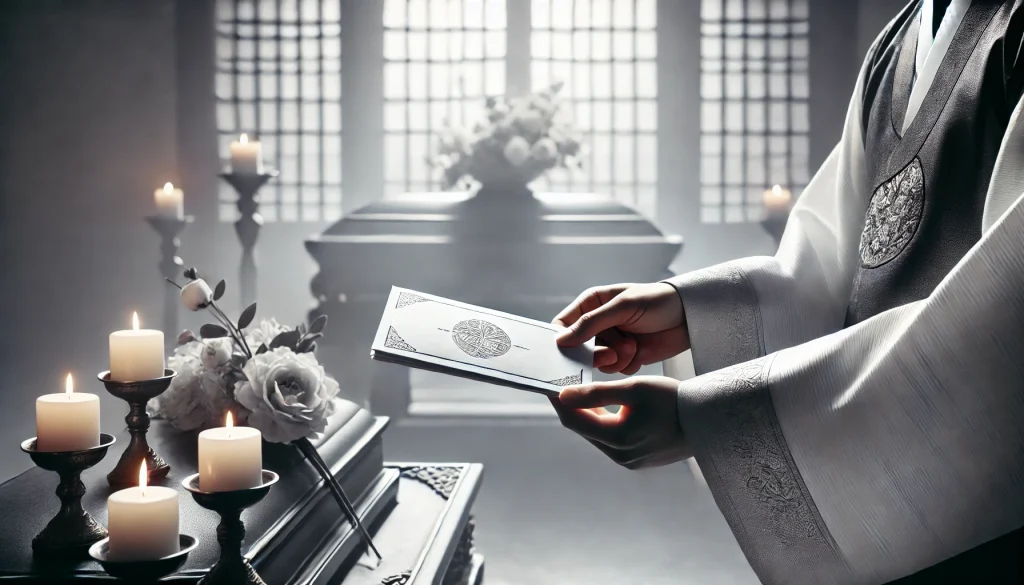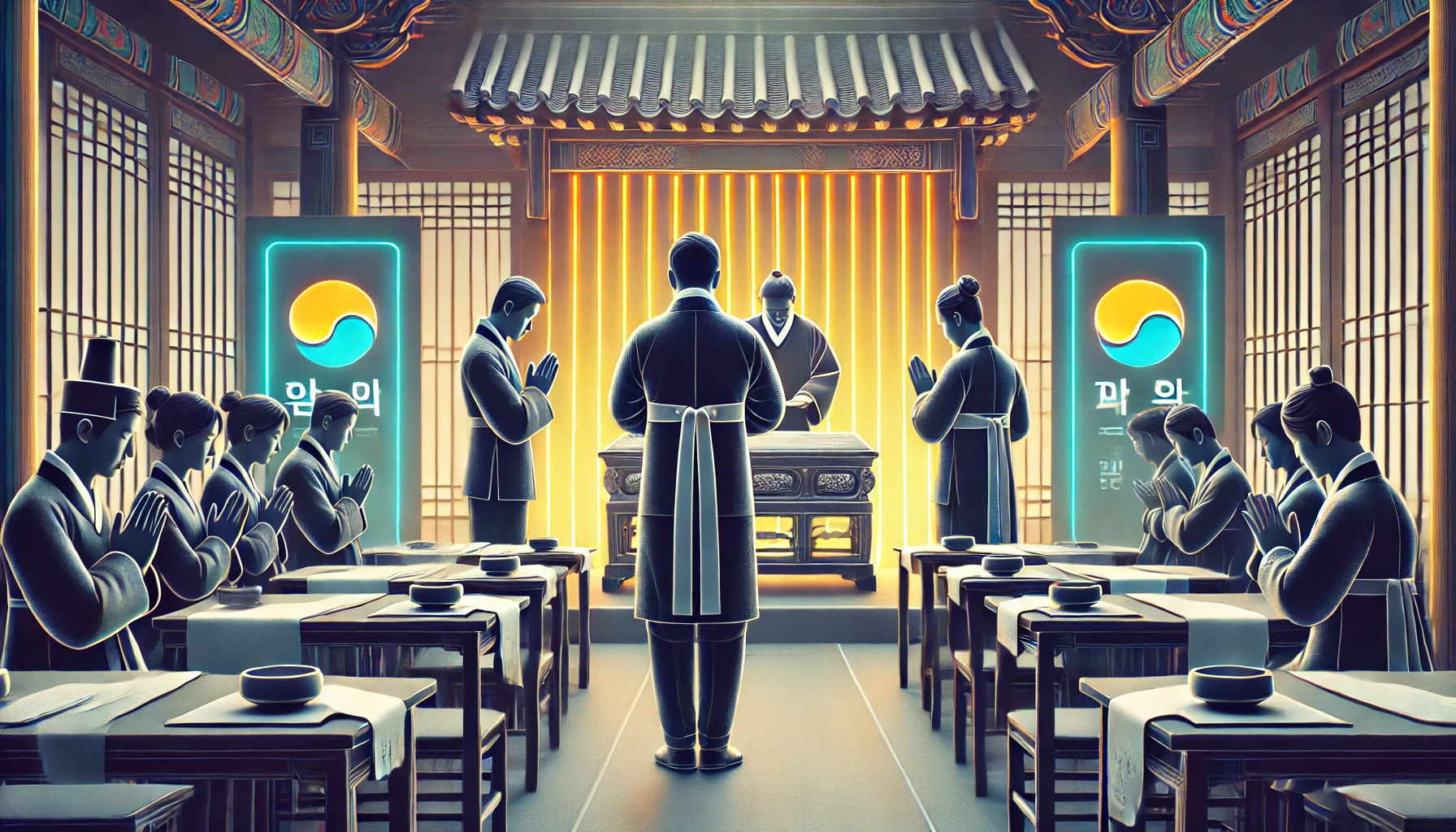Funerals are solemn occasions worldwide, but the customs and etiquette can vary significantly depending on the culture. In Korea, Korean funeral customs follow unique traditions that have evolved over centuries, rooted in both Confucian and Buddhist beliefs. For a foreigner attending a funeral in Korea, understanding these customs is crucial to showing proper respect to the deceased and their family.

Whether you are a fan of K-culture, living in Korea, or collaborating with Korean colleagues, knowing the correct behavior during such an event is an important aspect of cultural sensitivity. The right actions can honor the memory of the deceased and demonstrate your appreciation for Korean customs. This guide will walk you through each step of the process, ensuring you can attend a Korean funeral with confidence and respect.
Materials or Tools Needed
Before attending a Korean funeral, you’ll need to be prepared with a few essentials. While most items are standard for any formal occasion, there are unique aspects to be aware of when it comes to Korean funeral customs. Here’s what you should have:
| Materials/Tools | Description |
|---|---|
| Black Clothing | Wear formal, black attire as a sign of respect. Men should wear a black suit with a black tie, and women should wear a conservative black dress or skirt. |
| Condolence Money (부의금) | Monetary gifts are customary, and the amount you give depends on your relationship with the deceased. |
| White Envelope | Use a plain, white envelope to present your condolence money. No decorations or fancy designs should be used. |
| Comfortable Shoes | Funerals in Korea often involve walking and standing, so choose comfortable, formal shoes. |
In addition to these items, it’s important to familiarize yourself with basic etiquette and what is expected of you during the various parts of the funeral ceremony.
Step-by-Step Instructions
Attending a Korean funeral can feel overwhelming if you’re unfamiliar with the customs, but by following these step-by-step instructions, you’ll be able to participate respectfully and meaningfully. Each step focuses on a key element of the funeral, ensuring that your presence is in line with Korean funeral customs.
Step 1: Dress Appropriately

One of the first things you should be mindful of when attending a Korean funeral is your attire. Korean funeral customs dictate that you wear black, as it symbolizes mourning and respect for the deceased. Men are expected to wear a black suit, a white shirt, and a black tie. Women should wear conservative black clothing, such as a long dress or skirt and blouse. Make sure the clothing is simple and free from bright colors or embellishments, as these can be seen as disrespectful in a funeral setting.
It’s also important to avoid open-toed shoes or sandals. For men, black formal shoes are appropriate, while women should opt for closed-toe, low-heeled shoes. Bright accessories, makeup, or perfume should be avoided as well. Remember, the goal is to show respect, not to draw attention to yourself.
Step 2: Present Condolence Money (부의금)

In Korea, it’s customary to give condolence money, or 부의금, to the bereaved family. This money is used to help cover funeral expenses and as a gesture of solidarity and support. The amount you give generally depends on your relationship with the deceased or their family. For a casual acquaintance, the standard amount might be between 50,000 and 100,000 KRW (roughly $40 to $80 USD). For closer relationships, more money is usually given.
The money should be placed in a plain white envelope with no decorations. Ensure that the money is new and crisp if possible. When you arrive at the funeral, you’ll either hand the envelope directly to a family member or place it in a box that has been set up for this purpose. When handing over the envelope, bow slightly and express your condolences with phrases like “삼가 고인의 명복을 빕니다” (I offer my deepest condolences) or “힘내세요” (Stay strong).
Step 3: Participate in the Traditional Bowing Ceremony
Once you’ve presented your condolence money, you will be directed to the altar where the deceased is memorialized. This is a significant part of Korean funeral customs, as paying respects through bowing is a deeply symbolic act.
In front of the altar, you will bow twice deeply. This act symbolizes paying respects to the deceased, as well as showing your support for the family in their time of mourning. After bowing to the altar, you will then bow once more to the family members of the deceased, acknowledging their loss and offering your sympathy.
If you are unfamiliar with this custom, it is helpful to observe others around you to get a sense of the appropriate timing and depth of the bow. Each movement should be done slowly and reverently, maintaining a solemn demeanor throughout.
Step 4: Participate in or Observe the Memorial Service
Korean funerals often include a memorial service, which may involve prayers, Buddhist chanting, or a period of silent reflection. Even if you are not religious, it’s important to remain quiet and respectful throughout the service.
Phones should be turned off or silenced, and it’s advisable to refrain from taking photos or videos unless explicitly permitted by the family. Most funeral halls will have designated seating areas, and it’s polite to sit or stand where instructed, ensuring that you do not block others from participating in the ceremony.
The length of the service may vary, but funerals in Korea are typically shorter than in some other cultures. However, even after the formal service ends, guests may stay to offer additional condolences to the family or join in a meal.
Tips and Warnings
Navigating a Korean funeral can be a sensitive task, especially if you’re unfamiliar with the customs. Here are some additional tips and warnings that can help you avoid common mistakes and make a positive impression at the funeral.
| Do’s / Don’ts | Description |
|---|---|
| Do’s: Follow the lead of others | If you are unsure of what to do at any point during the funeral, observe how others around you behave. Mimicking the actions of locals is a good way to ensure that you are following Korean funeral customs correctly. |
| Do’s: Be mindful of cultural nuances | Silence and emotional restraint are valued during funerals in Korea. While in some cultures, open displays of grief are common, in Korea, it’s considered more respectful to maintain composure. |
| Don’ts: Avoid bright colors | Wearing bright colors, especially red, is considered inappropriate and even offensive in a funeral setting. Make sure your outfit adheres strictly to the black dress code. |
| Don’ts: Do not ask questions about the cause of death | It’s considered rude to inquire about the details surrounding the death during the funeral. Express your condolences and offer support without delving into sensitive subjects. |
Conclusion:
Understanding Korean funeral customs is not only about following a set of rules but also about showing empathy and respect in a culturally appropriate way. By dressing conservatively, offering 부의금 (condolence money), and participating in the traditional bowing ceremony, you can honor the memory of the deceased and their family. The key to navigating these moments lies in observing others, maintaining a calm demeanor, and being sincere in your actions.
Whether you’re attending a funeral for a friend, colleague, or through your connection to K-culture, following these steps will help you show your respect for Korean traditions and customs during this sensitive time.
FAQ
What is the significance of condolence money in Korean funerals?
Condolence money (부의금) helps the family cover funeral expenses and shows support. The amount varies based on your relationship with the deceased.
Can I attend a Korean funeral if I’m unfamiliar with the customs?
Yes, simply follow the lead of others, dress appropriately, and observe the bowing and condolence money traditions.
Is there a specific time to arrive at a Korean funeral?
Funerals are open for multiple days, so you can attend anytime during the designated viewing hours.
Resources
- Expat Schools Korea. How to Follow Korean Funeral Customs and Etiquette as a Foreigner in Korea.
- RW Baker Funeral Home. Korean Funerals.
- KCC Supporters Blog. Dos and Don’ts in Korea: Attending a Korean Funeral.
- Creatrip. Guide to Korean Funerals.
- YouTube. Attending a Korean Funeral: What to Expect.

